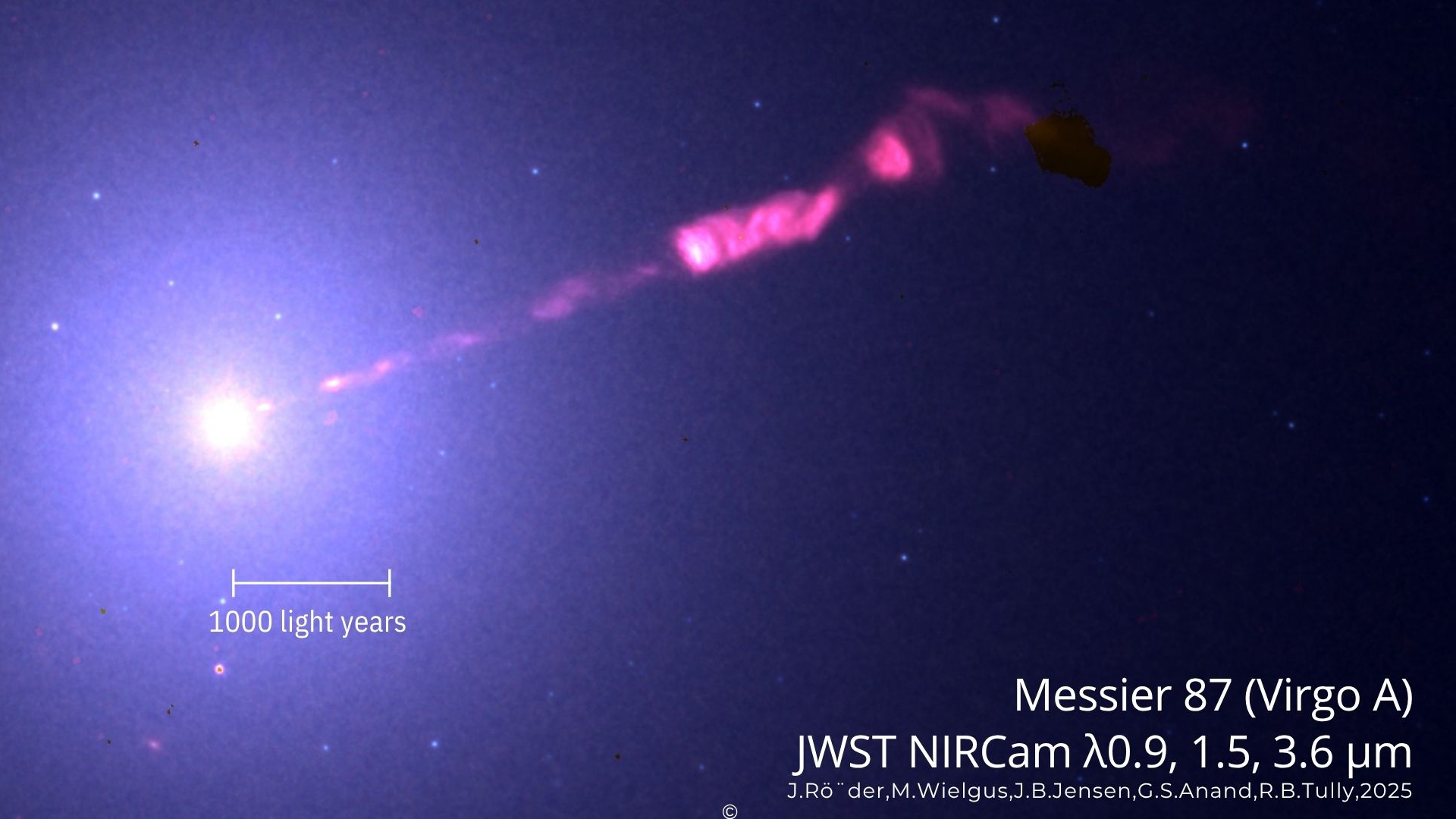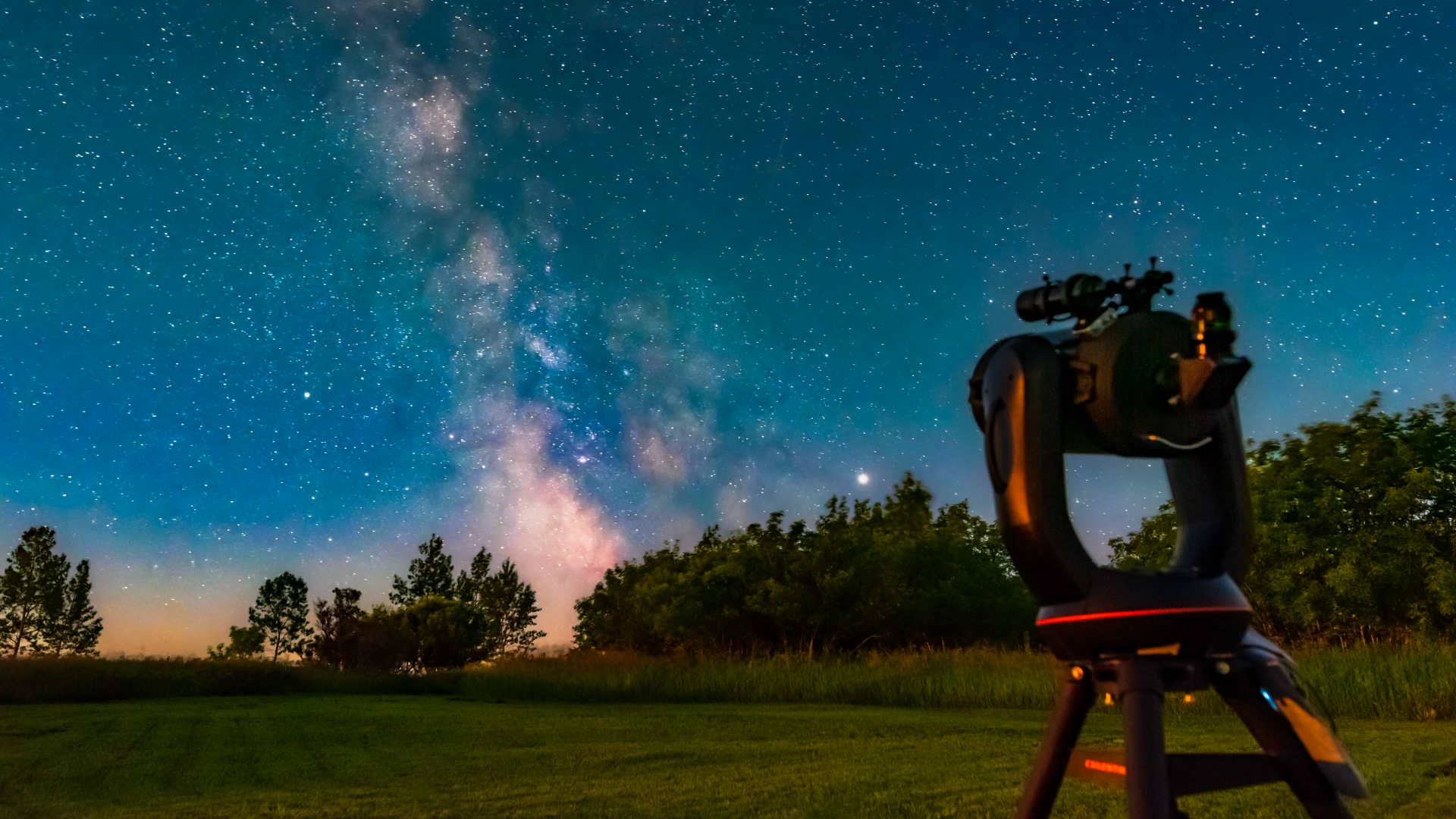JWST captures clearest-ever image of M87 galaxy's supermassive black hole jet
The supermassive black hole is that first one that astronomers ever photographed.

For more than a century, astronomers have marveled at the brilliant jet of matter blasting from the heart of the giant elliptical galaxy M87.
Now, the James Webb Space Telescope (JWST) has provided the clearest-ever infrared view of this cosmic powerhouse, revealing fresh details about the black hole-driven jet, and even catching sight of its elusive twin streaming in the opposite direction.
In the new JWST image, the jet appears as a luminous pink ribbon unfurling across a hazy violet backdrop. The stream of charged particles shoots a few thousand light-years from M87's central black hole. Bright knots glow along its length, tracing where particles are accelerated to near-light speeds.
And, for the first time in infrared light, Webb has captured the faint counter-jet about 6,000 light-years from the black hole — a feature that's very weak and difficult to spot because it's moving away from us at near-light speed, causing its light to appear dimmer.
M87, located about 55 million light-years from Earth and first noted by Charles Messier in the 18th century, is one of the most-studied galaxies in the sky. At its core sits a supermassive black hole, called M87*, made famous in 2019 as the first one that ever humanity ever photographed directly. This black hole fuels the colossal jet, which serves as a natural laboratory for some of the universe's most extreme physics.
Using Webb's Near Infrared Camera (NIRCam) instrument, a team led by Jan Röder of the Institute of Astrophysics of Andalusia in Spain imaged the jet in four infrared bands. To isolate the jet, the researchers carefully subtracted starlight, dust and background galaxies, leaving behind the most detailed infrared portrait of M87's outflow ever assembled, according to a paper the team published last week in the journal Astronomy and Astrophysics.
Closer to the galaxy's core, the jet takes on a helical form. A slow-moving feature dubbed "knot L" is visible in JWST's snapshot, along with a brighter region called HST-1 that's known for its fast, seemingly superluminal motion. Webb's crisp view shows HST-1 splitting into two distinct substructures with different emission properties, which is evidence of shocks and complex particle dynamics close to the black hole, the study notes.
Breaking space news, the latest updates on rocket launches, skywatching events and more!
Farther out, the counter-jet about 6,000 light-years from the black hole appears as two filaments connected by a hotspot, forming a faint C-shape that's consistent with radio observations, the researchers note in the study.
The new data confirm that the jet shines through synchrotron radiation — light emitted by charged particles spiraling through magnetic fields. By measuring subtle differences in color across the infrared bands, the team traced how particles accelerate, cool and twist along the jet, according to the study.
Jets like M87's are natural laboratories for extreme physics, powered by supermassive black holes and capable of accelerating particles to energies far beyond anything achieved on Earth. Understanding them helps astronomers probe how black holes influence their host galaxies, regulating star formation and spreading matter and energy far into intergalactic space.

Sharmila Kuthunur is an independent space journalist based in Bengaluru, India. Her work has also appeared in Scientific American, Science, Astronomy and Live Science, among other publications. She holds a master's degree in journalism from Northeastern University in Boston.
You must confirm your public display name before commenting
Please logout and then login again, you will then be prompted to enter your display name.
